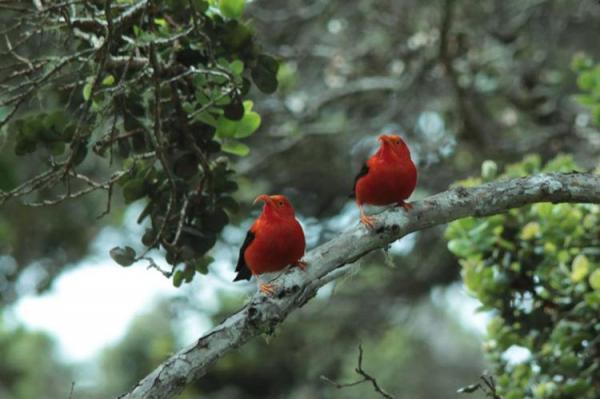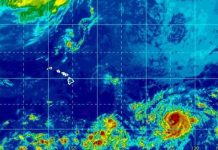
March 17 (UPI) — New research suggests plant and animal diversity has been on the decline on all Hawaiian Islands, except for the Big Island, for several million years.
Researchers measured the decline using a new biodiversity analysis method. Scientists traced the history of diversity of 14 different groups of birds, insects, spiders and plants.
“It is increasingly appreciated that the biota of any particular place is a dynamic, ever-changing association of species,” University of California, Berkeley graduate student Jun Ying Lim said in a news release. “The beauty of islands like Hawaii is that their geologic setting provides multiple temporal snapshots, and in so doing provides us a window to understanding the processes that have shaped its assembly though time.”
The results, detailed in the journal Nature, suggest the shrinking sizes of the Hawaiian Islands put pressure on resident species.
“On the older islands, Kauai, Oahu and the four islands that were once parts of a bigger island called Maui Nui, it looks like most groups are now in long-term evolutionary decline,” said Charles Marshall, a professor of integrative biology at Berkeley. “The older islands were all much larger than they are now, and it looks like the flora and fauna filled up the ecological space fast enough that once the islands began to contract the crowding generated drove species to extinction.”
The new research suggests, in contrast the assertions of some scientists, biodiversity on most of the Hawaiian Islands peaked a long time ago.
Scientists have previously hypothesized biodiversity tips into decline when ecological resources become taxed and habitats become overcrowded. The newly retraced history of diversity on the Hawaiian Islands confirmed the hypothesis.
“With a quantitative measure of changing carrying capacity from the geologic record, Jun and I have been able to invert the process and infer the diversity trajectories for Hawaii, discovering on the way that none of the Hawaiian groups are at dynamic equilibrium,” Marshall wrote in a blog post.




